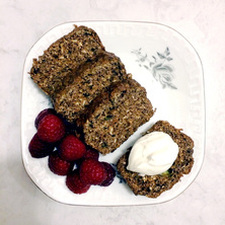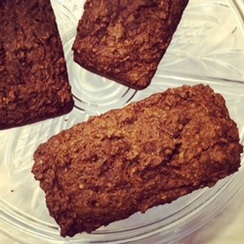 February was National Heart Month and March is both National Nutrition Month AND National Colorectal Cancer Awareness Month, so eeeeeverybody is talking about fiber fiber fiber! But why??? Because most of us are lacking it in our diets! It’s recommended that women get at least 25 gm per day and men at least 38 gm per day (a bit less for both if you’re over 50 years of age), however, the average American diet only includes about 15 gm of fiber per day (1). You’ve probably heard that you need fiber to maintain regular bowel movements, preventing constipation and stimulating the muscles of the digestive tract to stay healthy and toned. Yes, toned. Yet there are so many more reasons it’s vital to our health. First it’s important to know there are two types of fiber: 1) Soluble fiber – absorbs water, forming a gel-like substance, solidifying and adding bulk to stools. 2) Insoluble fiber – mainly remains intact and speeds up stool’s movement out of the body. In particular, soluble fiber helps reduce the risk of heart disease and diabetes. It binds with LDL ‘bad’ cholesterol and takes it out with your digestive trash, and it slows down the absorption of sugar aiding in regulating blood sugar levels. Fiber also works to keep our waistlines from expanding. Most sources of fiber are low in fat, sugar and calories, and soluble fiber actually slows the movement of food in the upper part of the gastrointestinal tract keeping you feeling full. Additionally, while studies are mixed, many of them have shown that fiber helps reduce the risk of colon cancer, which is the second leading cause of cancer deaths in the USA with about five percent of the population being diagnosed with it (2). So where does one get all this fiber? Plant based foods. Fiber is the indigestible portion of plants. For example, it is found in the bran (outer shell) of grains, which is why eating whole grains is preferable to refined, processed ones that have stripped the grain of its outer fiber containing layer. Soluble fiber sources include oats, oat bran, cereal brans, barley, rye, fruits, vegetables, legumes (aka beans and peas), seeds and seaweeds. Insoluble fiber is found in whole-wheat flour, whole grain items, brown rice, wheat bran, vegetables, legumes, nuts and seeds (3). And how does one get enough fiber in his or her diet? To start, get your recommended 2 cups of fruit and 2 ½ to 3 cups of vegetables per day. Choose whole fruit and vegetables, not the juice forms, and eat the skin or peels, such as on apples, carrots and potatoes, because that’s where a lot of the fiber is in additional to a multitude of vitamins and minerals. Make a fruit and nonfat plain yogurt parfait for breakfast, add it to your whole grain cereals or eat fruit for dessert. Throw vegetables into everything from salads, soups, sandwiches, sauces, etc. Choose whole grains, especially in bread and pasta products. Look for labels that say ‘100% whole wheat’ or ‘whole grain,’ and that include whole wheat, oats or barley as the first listed ingredient. Add oat bran, flaxseed meal or chia seeds to yogurt or cereal. When baking or cooking, substitute at least half of the flour with whole wheat flour. Try substituting plant-based protein (ex. nuts, beans) for meats and cheese. Add nuts, beans or peas to soups, salads and pasta dishes, or even mash them up to make a fresh homemade dip for some cut up broccoli, carrot sticks or whole grain crackers. ALWAYS read food labels. Look for at least 4 gm of fiber per serving. And be creative! What else do you need to know? If you start to increase the amount of fiber you’re eating, do it slowly because adding fiber to your diet may cause you to feel bloated. Make sure to drink enough water for the fiber to absorb and to help it function properly in your system. Lastly, be careful not to just eat fiber filled products because too much of anything, even good for you foods, can be harmful, and too much fiber may lead to mineral deficiencies. Below I’ve included a winter appropriate 'fiberful' sweet treat recipe. It's also suitable for vegans. Enjoy for breakfast, a snack or even dessert! :)  Zucchini Carrot Flaxseed Meal Whole Wheat Mini Loaves
Sift together the flour, flaxseed meal, baking powder, baking soda, salt and spices together in a bowl. Set aside. Mix the coconut milk, applesauce, coconut sugar, maple syrup and vanilla in a bowl. Add the zucchini and carrots. Add the nuts if desired. Add the dry mixture to the wet mixture and stir until just combined. Lightly grease the baking pans and spread the mixture evenly into each one. Bake @350*F for about 45-60 minutes or until a toothpick/knife comes out clean. Yields: 4 mini loaves
1 Comment
4/10/2017 02:09:37 am
such an great and yummy cookies i have tried it at my home
Reply
Leave a Reply. |
Maxine Yeung
|
|
©2013-2024 The Wellness Whisk, LLC. Information provided here is not meant to diagnose or treat any health condition or override any information presented by your individual medical providers. Please use your judgement and take a personalized and sensible approach to your health. All rights reserved.
|


 RSS Feed
RSS Feed